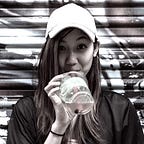How People Can Be Researched to Inform Design (10/14)
On Wednesday, Donna explored methods and components of design research in preparation for our Semester Project (Assignments 3 & 4). She introduced types of research and methodologies we can utilize. Research helps us to test how well-received our designs may be and their usability. It helps us to understand people’s actions and their needs.
There are multiple research methods we can utilize. The photo above, taken from Donna’s slides, can help guide us through the process and highlights questions that should be asked. We should also remember to be flexible and approach our research with care. Our presumptions may not be always correct and we will have to adapt as we continue to research and rework our designs.
We went over four ways to research: generative, descriptive, evaluative, and casual.
In generative research, design differs from research done in other disciplines in its focus on generating theory through observation instead of converging existing observations. We covered the AEIOU methodology as a classic kind of observational research, both looking at actions in the moment as well as traces of past actions or interactions. Such examples would be interviews, sketching, daily life and more. Another common methodology involves creating toolkits to aid or focus the kinds of observations we can obtain. When we ask our participants to create or make with us, it may unlock latent or tacit knowledge that is not readily called upon otherwise.
The second type of (particularly varied) research is Descriptive Research. Donna walked us through some of the common frameworks in use as well as the specific use cases they are best suited for as well as their pros and cons.
A third, Evaluative Research is a type that generally appears later in the development cycle and helps assess and collect information about existing products and services. Often times these methodologies tap into a designer’s facilitation skills as they search for actionable insights about what currently exists.
Finally, Causal Research helps designers ask and answer many of the Why? Questions. While there are several methodologies here, Donna warned of the tendency to imply causation from correlation observations.
Forming Teams
Afterwards, we moved onto our speed dating activity for a better understanding of principles. This prompted us to introduce the following two assignments remaining for the course and then moved to the process of team formation. To aid in the formation of teams, we used a Miro board pre-populated with themes that students could choose as their topic for the final project. Students were also able to create their own topics to see if there was any mutual interest.
Getting to know your Team
With the remaining time in class, the teams met and started to share their perspective on the topic and their goals for the project by answering three questions:
- Why is this an interesting project?
- What is the core problem you plan to address?
- What principles do you think you may apply and why?
While teams are exploring their topics, it’s useful to start by thinking about the personal agendas involved and the kind of questions that this leads to ask during the process. In the following classes, we’ll keep exploring how to narrow the scope of the projects, what key questions to address, how to craft a research plan and most importantly, hear from some guests about their processes, the methods used and the challenges faced during their human-centered design projects.
